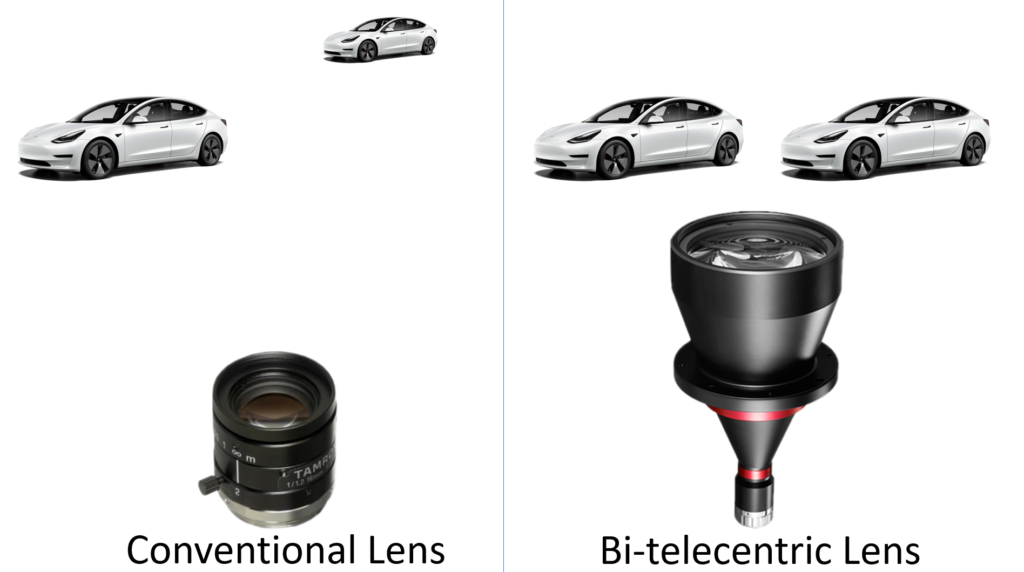Our human eyes work very similar to a conventional lens, which allows us to estimate the distance of an object. This has to do with the angular fields of view of conventional lenses, which causes magnification to increase with decrease in distance.
This relationship can be observed from the equation below, which shows how lens power is inversely related to focal length. Assume lens power is magnification, and focal length is distance of an object, you can quickly see how a smaller distance to an object will lead to large magnification.
Lens Power = 1/Focal Length
Because of the angular fields of view of a conventional lens, the same object will appear to be much larger to us than if it is placed further away. While the ability to estimate distance by scaling the object with respect to its distance is useful feature to have to us humans, it can be very problematic for machine vision systems.
Below is an illustration of how two objects can appear to have the same scale at two very different distances. Only an illustration, as you probably can’t find a telecentirc lens for the size of a car…

Recently, EAMVision was called upon to rescue a factory that suffer from an optical measurement issue on their newly installed vision system. The main problem with the customer’s vision system is that it requires constant calibration. Most importantly, the vision system’s measurement repeatability and accuracy would degrade significantly whenever the conveyor motor is engaged.
Our machine vision engineer spotted the issue instantly upon review of the application. The repeatability and accuracy errors were due to two common problems in machine vision. First, the machine vision system did not have sufficient lighting and required a large gain and exposure time. This resulted in significant motion blur from the micro-vibration of the motor whenever it is engaged.
The second issue was the incorrect selection of lenses for the application. The machine vision system had a conventional lens with angular fields of view, which caused the magnification to vary as the stations are indexed. As the distance between the object and the camera varies between index stations, it significantly affected the measurement.
The selection of lens is just one of many factors that can significantly affect machine vision performances, and an incorrectly implemented lens is more dangerous to a factory than no vision system at all.
Contact EAMVison today on how we can help you build the best custom vision system for your custom application.
MACHINE VISION INTEGRATORS